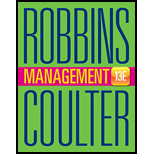
To determine:
The connection among bias,stereotyping,prejudice and discrimination.
Introduction:
Bias means treating one thing better than the other; it comes in many forms which include gender, ethnicity, age, race, etc. The Biased individual believes that they are applying the other people are right without regard for the truth. Bias is the tendency or the preference towards ideology or perspective, the unchecked bias will lead to prejudice. Bias - Inclination towards an individual or a group of individuals which is considered unfair.
Stereotyping refers to those beliefs that are being generalized among certain group communities, irrespective of knowing the fact, that to what extent the belief is correct. In Stereotyping it is being considered that if the generalized view or belief is correct for one person in a group, then it is applicable to other members of that group also.
Prejudice refers to that unfavorable view that a person forms regarding others, such as for an individual, group or things, etc. without having enough knowledge about it. Those views are rarely based on any personal experiences.
Discrimination refers to showing indifferent behavior towards a group of people, or an individual. In discrimination people who are being discriminated against are not given equal rights as other members of the group. Even though these four are different concepts, but they are interrelated with each other as one leads to another.
Want to see the full answer?
Check out a sample textbook solution
- Identify, in the correct order, the key steps which must be followed when developing a global strategy: a.Decide whether to globalize, where to globalize, how to globalize b. Decide whether to globalize, where to globalize, internationalize the core strategy c.Develop the core strategy, internationalize the core strategy, globalize the core strategy d.Develop the core strategy, locally market the core strategy, internalize the core strategyarrow_forwardThis structure is created around cross-functional core processes, with self-managed work teams, providing teams with the ability to think outside the box, and people being empowered with the necessary skills, tools and authority to make vital decisions a.Matrix structure b.Divisional structure c.Horizontal structure d.Functional structurearrow_forward_________________ are defined as forces that shape on organisation’s strategy a.Strategic Drivers b.Human Resources c.Strategic Leversarrow_forward
- A clearly defined __________________ directly addresses the question “What is our business?” from an organisational standpoint and distinguishes it from another similar firm a.Vision statement b.Business plan c.Strategic Plan d.Mission Statementarrow_forward___________________refers to the process of redesigning a vertical organisation along its horizontal workflows and processes. Rather than focusing on narrow jobs structured into distinct functional departments, they emphasise core processes that cut horizontally across the organisation and involve teams of employees working together to serve customers a. Business Process Reengineering b. Horizontal Configuration c. Structural Reengineering d. Workforce Configurationarrow_forward___________________refers to the process of redesigning a vertical organisation along its horizontal workflows and processes. Rather than focusing on narrow jobs structured into distinct functional departments, they emphasise core processes that cut horizontally across the organisation and involve teams of employees working together to serve customersarrow_forward
- Assuring results is an attainable habit of a strategic leader only if a strategic leader is intentional in developing high performing organisations. Strategic leaders must be intentional in this because they can shape the organisational culture, or the culture may ‘manage’ the leader. One way to do this is to ______________ a.Develop a Strategic Leadership plan b.Develop a Vision Statement c.Implore levers of change d.Develop a Strategic Implementation Planarrow_forwardSupporting Strategic Initiative Through HRM Policies Given the strategic initiative and organization described in your Module 2 and Module 3 Critical Thinking assignment submissions, discuss the Human Resources Management (HRM) policies that would consistently and coherently support attainment of your strategic initiative. These policies might address recruitment, selection, training/development, performance evaluation, compensation, and dismissal. Briefly describe the organization and your initiative. Describe HRM policies you think are important to implement your strategic initiative. Describe rewards and incentives that would be used to ensure compliance, buy-in, and effort to make the strategic initiative successful.arrow_forwardAs you are looking at different areas within the country in which to locate the manufacturing plant, you came across a facility built by a startup company that went out of business within two years due to underfunding. You think you can get a good price for the plant, but you will need to negotiate with the local owners. You are a fairly experienced negotiator in the US but have never dealt with parties from your expansion country. To prepare yourself, review Chapter 5, which describes various ideas for negotiating with different cultures. Additionally, you may go to the following website and view videos on Cross-Cultural NegotiationsLinks to an external site.. Initial Post Instructions For your initial post, describe key factors that you would want to research prior to conducting negotiations with key personnel for the purchase of a manufacturing plant in the location selected for your expansion initiative. Explain why you think this would be a key factor in the negotiation…arrow_forward
- Develop a risk management plan for the transition to a smart meter system. How will WSSmeasure the success of this risk management plan?arrow_forwardCompare and contrast ToolTopia’s virtual workspace with the concept of a virtual network structure. first define virtual workpace and virtual network structurearrow_forwardSuggest two specific mitigation strategies WSS could employ to reduce the risk ofinaccurate meter readings in its current system.arrow_forward
 Foundations of Business (MindTap Course List)MarketingISBN:9781337386920Author:William M. Pride, Robert J. Hughes, Jack R. KapoorPublisher:Cengage Learning
Foundations of Business (MindTap Course List)MarketingISBN:9781337386920Author:William M. Pride, Robert J. Hughes, Jack R. KapoorPublisher:Cengage Learning Understanding Management (MindTap Course List)ManagementISBN:9781305502215Author:Richard L. Daft, Dorothy MarcicPublisher:Cengage Learning
Understanding Management (MindTap Course List)ManagementISBN:9781305502215Author:Richard L. Daft, Dorothy MarcicPublisher:Cengage Learning



